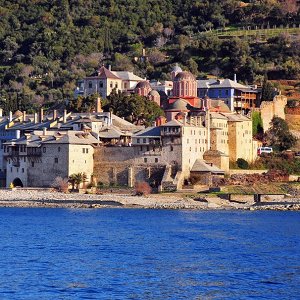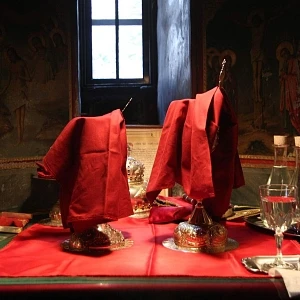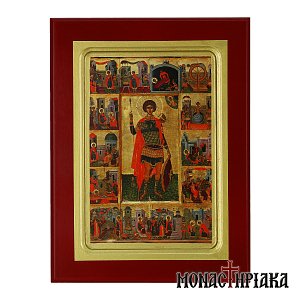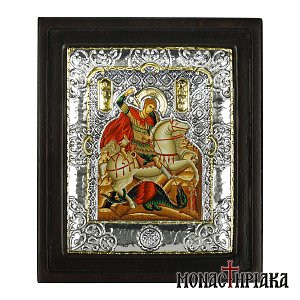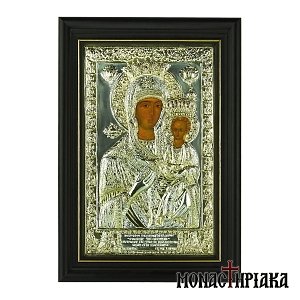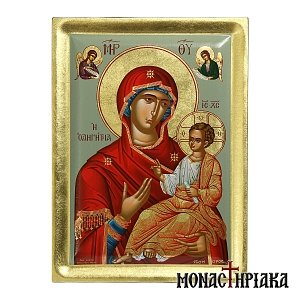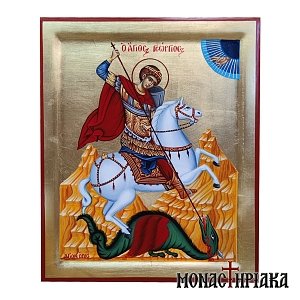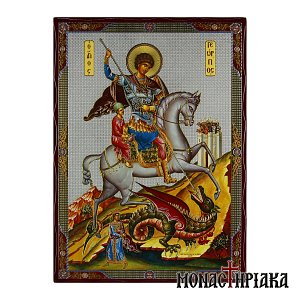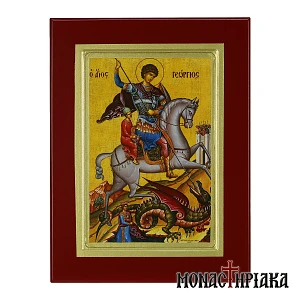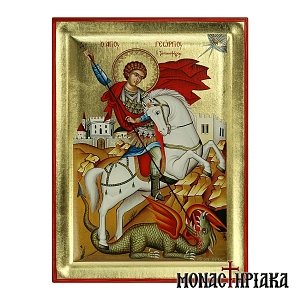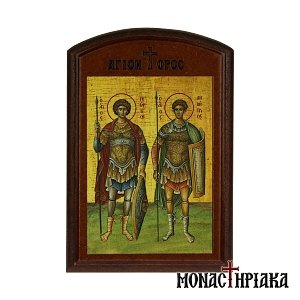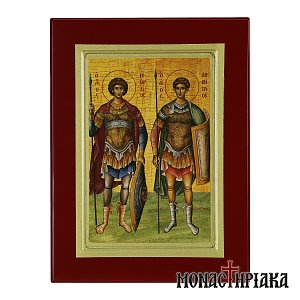The story behind the Miraculous Icon of Saint George
The miraculous icon of Saint George the Trophy-Bearer is located at the Holy Monastery of Xenophontos on Mount Athos and dates back to the period of Iconoclasm.
How the icon was saved from the Iconoclasts
During the time of the Iconoclasm in Constantinople, the Iconoclasts acted against sacred icons and attempted to get rid of them by throwing them into the fire. When they came across the icon of Saint George, they tried to destroy it in the same way, but were unsuccessful.
The miracle of the icon in the fire
The iconoclasts threw the icon into the flames, but it remained unharmed, with only a little damage to the garments of Saint George. At that moment, a servant of the king stabbed the icon where the saint's chin was, and immediately blood began to flow!
The heretics were stunned by this event. They were scared, decided to leave the icon behind and disappeared. At the same time, a devout christian found the icon of Saint George and prayed for its safe passage through the sea.
During his prayer, the faithful's words were as follows: "Great Martyr of Jesus Christ, Trophy-Bearer Saint George, you who performed so many miracles during life and after death, and who have just now left your holy icon safe from fire, preserve it now and carry it safely through the sea, wherever you know and desire, for the glory of our God."
With these words, the christian threw the icon on the sea.
Here you can find icons of Saint George the Trophy-Bearer.
![]()
How the icon arrived at the Holy Monastery of Xenophontos
The holy icon of Saint George arrived by Divine Providence in the 10th century at the coast of the Holy Monastery of Xenophontos on Mount Athos.
At the spot where the miraculous icon was found, at the edge of the beach next to a rock, existed the small Monastery of the Great Martyr Saint Demetrius, where a small chapel still stands to this day, erected by Saint Xenophon. Initially, the holy icon of Saint George was placed there.
It is said that when Saint Xenophon saw the icon floating on the sea, he personally financed the construction of the old Cathedral of the Monastery in honor of Saint George. Since then, Saint George has been considered the patron of Xenophontos Monastery.
The Holy Water of Saint George with its healing properties
Why was he named 'Dysuritis'
At the location where the miraculous icon was found, acidic healing water flows to this day. According to tradition, this is the holy water of Saint George, which has healing properties for kidney ailments, gallbladder issues, and the disease of dysuria. Thus, Saint George received the sobriquet 'Dysuritis'.
Today, the miraculous icon of Saint George is placed in the main Church of Saint George on the eastern column. The holy icon depicts Saint George in full figure, as well as the wound on his neck with blood, as a sign of the miracle that occurred centuries ago.
Even today, the icon reminds the countless miracles that were performed by the Holy Great Martyr Saint George. The monks honor and commemorate Saint George the Trophy-Bearer and Saint Demetrius the Myroblyte daily during the dismissals of Divine Services.
Here you can find icons of Saint George and Saint Demetrius.
![]()
When is the celebration of Saint George
Our Church commemorates the memory of Saint George twice a year.
On April 23rd, we honor his dormition through beheading, and on November 3rd, we celebrate the disinterring of his relics.
![]()
